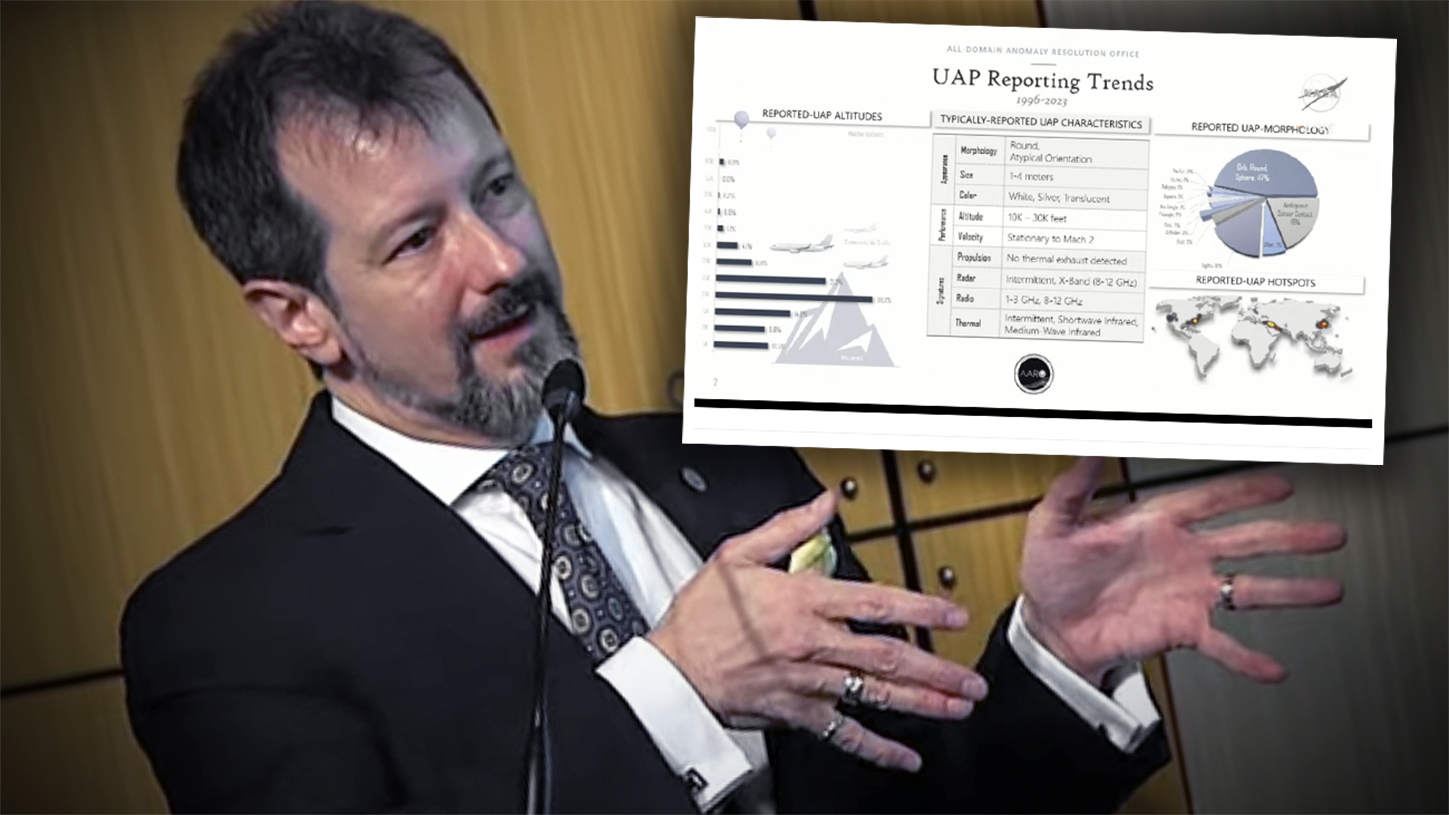Only between 2% and 5% of the 800 cases currently being investigated by the Pentagon’s All-domain Anomaly Resolution Office (AARO) “display signatures that could reasonably be described as anomalous,” the head of that office testified during a NASA hearing Wednesday. But while the majority of those cases “demonstrate mundane characteristics of readily explainable sources,” a “large number” of those sightings are “technically unresolved…primarily due to a lack of data associated with those cases,” AARO Director Sean M. Kirkpatrick testified. That’s a key reason, he said, why AARO has been developing its own “purpose-built sensors” to detect, track and characterize objects in suspected hot spots.
“Without sufficient data, we are unable to reach defendable conclusions that meet the high scientific standards we set for resolution,” Kirkpatrick said at NASA’s UAP Independent Study Team hearing Wednesday. UAP, or unidentified aerial phenomena, is the new term for UFOs.

To help offset that lack of data, AARO has developed “purpose-built” sensors to investigate key areas and improve the data that can be collected. This represents a more proactive approach than previously understood, creating a dedicated array of sensors to hunt for UAPs as opposed to passively evaluating what has been reported to it and any data that happened to exist from those encounters.
“One of the first things that we’re doing is looking across all the existing sensor data against that typical UAP target,” he said.
Pointing to details on a slide he displayed during the hearing, Kirkpatrick explained that those “target characteristics” are based on what has been reported as well as data gleaned from the available sensors.
Nearly half of the objects have been reported as orbs or spheres, he said.

The “heat map of the areas where we get most of our reporting… is very much a collection biased map,” he explained. “This is where our sensors are, our military, and our IC, and some of the FAA data. And then with this, is what we call our typical UAP characteristics for the vast majority of the cases that we see. One way of looking at that is we’ll call it a target package. And this is the thing we are out hunting for, in most cases.”
Not only does that include Defense Department and Intelligence Community (IC) sensors, but it also includes commercial sensors as well as those operated by NASA, NOAA and the FAA, Kirkpatrick said.
“Understanding if any of these Earth sensing satellites, any of these airborne platforms, any of these ground radars – whether it’s FAA or other – can actually see these things, given what we’ve got so far is going to be an important first step to understanding what sensors are going to be relevant.”

AARO is “augmenting” the data obtained by those sensors with “dedicated sensors that we’ve purpose-built designed to detect, track and characterize those particular objects. We will be putting those out in very select areas for surveillance purposes.”
Those purpose-built sensors, he said, are designed to search through UAP target characteristics “to see if we can find them correlated to pilot reporting.”
The goal, he said, is to move beyond reliance on existing DoD and intelligence community sensors because “they don’t point to where we want them to point.”
Kirkpatrick said the problem is while the U.S. has “the largest collection apparatus in the entire globe” most of that is arrayed around the continental U.S.
“Most people, including the government, don’t like it when I point our entire collection apparatus to your backyard,” said Kirkpatrick. “It’s not allowed. We have some laws [prohibiting domestic surveillance] about that. And we’ve got to figure out how to do this only in the areas that I can get high confidence, there’s going to be something there. And high confidence, I’m not going to break any laws doing it. So there’s a trade there.”
As a result, it is going to be necessary for some “ground-based point detectors” to “point up, to point out to search,” he said.
AARO is also “evaluating a number of sensor opportunities across different organizations, academia, industry, whatnot that already exist or are being built for similar purposes, or maybe other purposes that I might be able to recalibrate for this, and see if those will have a chance of seeing that target. So that’s where the modeling and synth comes in. Can I take that target, put it into your sensor, and have a chance to see if I can, and I might want to use it?”

Beyond that, during the hearing, Kirkpatrick didn’t specify the types of sensors or where they will be located. We reached out to the Pentagon for details and will update this story if and when they are provided.
An added challenge, said Kirkpatrick, is that the “vast majority of what we have reported to us are DoD sensors. DOD sensors are not scientific sensors. They are not intelligence community sensors. Believe it or not, intelligence community sensors are very close to scientific sensors, they are calibrated, they are high precision, they are everything you’d ever want to know about a thing.”
DOD sensors, on the other hand, “have one purpose,” said Kirkpatrick, which is to identify objects that are known and have weapons on them.
Kirkpatric said AARO is putting together its annual report to Congress, which is due August 1.
The number of cases that have been reported will be updated, he said, adding that there was a big jump recently – from about 650 cases he testified about to Congress in April – in large measure because AARO received FAA data.
“We’re going to try to do a little more fidelity on some of the analytics when we report out,” he added. But the percentage of so-called anomalous cases should remain the same.
We will bring you the details of that report when they become available. Until then, it seems that AARO is actually actively hunting for this ‘phenomenon.’
Contact the author: howard@thewarzone.com
